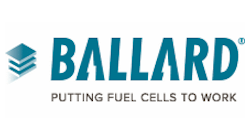Changing fuel sources to green up a fleet and reduce fuel costs is happening in big agencies across the nation, but for many small and rural transit fleets, this goal remains elusive given the massive costs accompanying a changeover in fuels.
Pelivan Transit, situated in the northeastern part of Oklahoma was one of these small agencies looking to make a change in fuels and reap the same types of benefits the big agencies were seeing. Several years ago, leaders there began looking around to find a way to make this dream a reality and in a way that wouldn’t decimate its budget.
Being situated in Oklahoma, compressed natural gas seemed like natural fit for Pelivan given the large reserve of the resource situated under the state, said agency transit Director Debbie McGlasson. So, they began to look for public and private partners in the region to make it a reality.
“Its been a chicken and the egg concept where what you have to have first, but you really need to grow together because if you’re an investor looking to put in a fast fill CNG station, there has to be a fleet in the area,” McGlasson said. “If they’re going to do an investment, they need to see a turnaround right away.”
Pelivan worked with local cities and tribal councils to grow CNG fleets together, while working with gas companies to build infrastructure to sell both them and the public natural gas. Now CNG investment has taken place in places like Grove, Okla., and Miami, Okla., where fleets can purchase fuels. Now they’re working to procure grants to continue the expansion with the goal of expanding CNG availability and targeting interstate traffic traveling outside of Oklahoma.
Meanwhile, Pelivan secured funding to convert nine of its 66 fleet vehicles to CNG. McGlasson said it’s working to procure a TIGER grant to grow the fleet even bigger.
“This just shows people working together in concert to push this vision forward as more than just a concept, it’s an actual transformation,” she said.
McGlasson said one of the biggest challenges with the push for CNG has been educating the public about the benefits of the new fuel so they’ll embrace it. Key is having proponents of the fuel to help in this education and to get the word out.
Funding sources are scare, so financial gains made by reduced fuel costs and maintenance on CNG vehicles have been very beneficial to a small agency like Pelivan, McGlasson said. With the savings it has been able to put money back into the system and potentially grow routes and improve service.
“When faced with funding challenges, sometimes it’s good to look around at what your local resouces are and that’s what our small town did. They say that natural gas was abundant here in and we started working on solutions in areas we hadn’t before,” McGlasson said. “Even the small rural transit agency in small town America can impact not only our level of service, but that’s how change in the industry comes.”
“We knew we had limited funding, we knew it would reduce fuel costs, we knew it would reduce maintenance costs while serving the public and stimulating the economy and it has been a win-win opportunity with partners now across the board like the Oklahoma Turnpike Authority, ODOT, local cities and private partners like Tulsa Gas Technologies,” she said. “Then of course, public transit the benefits have really been impacting our riders because the bottom line is it keeps those routes open or extends them into new points we couldn’t reach before, so that kind of is streamlining the effort to become a more efficient transit provider.”
Ryan Erickson, senior project director for Gladstein, Neandross & Associates, said the decision to switch to natural gas should still be measured on a case-by-case basis as it isn’t a foregone conclusion all agencies will save money.
For smaller agencies, the prospect of saving money may look like a strong selling point, but if it doesn’t use enough fuel, it may not be worth the switch given the cost recovery during the lifetime of the bus and the upfront capital costs to make the switch. Public fueling stations like one places in Commerce, Calif., positioned 1 mile away from where buses are housed can help smaller agencies recoup the costs.
Cold weather agencies also have concerns about the usage of natural gas, but issues can be worked out in the design phase of the transition.
“A lot of times, these agencies may have tried natural gas before back in 1990 or whenever and they may have had a lot of issues, but given how much the technology has matured we have a lot more agencies looking at it now,” he said. “But some of these guys who tried it back then remember it being a pain, so they’re not sure if they want to try it again or they’re not sure if the problems were resolved or if the technology has improved.”
Hybrids
One of the most popular fuel saving options from the automobile realm some transit agencies have embraced is the use of hybrid drive systems. With electric-diesel hybrids being used across North America for years, there has been a lot of questions and successes surrounding the technology, however, many people still aren’t sure what it really is.
“A lot of people in the industry don’t understand what a hybrid does,” said Lawrence Zepp, chief technologist for CrossPoint Kinetics. “Half of the people I talk own a hybrid car and they don’t understand what it is either.”
Hybrids in transit use electric motors in conjunction with traditional engines to create a way to capture power, store it in either a battery or ultracapacitor system, then use it to help move the vehicle or restart an engine that shuts off during a prolonged idle.
In transit, parallel hybird systems are used on buses or paratransit vehicles and the systems use electricity. Zepp said some transit hybrids are looking at using a hydraulic hybrid system using pressurized oil, like delivery vehicles use, however, those systems could bring additional concerns in a public transportation use.
“One of the dangers you don’t have to look out for with electric hybrids is you don’t have that high pressure oil that you have to worry about getting loose because it can drill holes in things,” Zepp said. “Those operate at 30,000 to 35,000 PSI, which is the same level of pressure a commercial airliner uses for its control systems, so you don’t ever want to get a leak or a pinhole because it will shoot out like a water jet cutter and you don’t want that to get anywhere near your passengers.”
However, hybrids aren’t exactly a solution for everyone. Zepp said frequent stops and idling need to be part of a hybrid’s stop in order for it to generate savings, seeing as it takes the capture of kinetic energy to make the system useful.
Hybrids also got a bad rap when they first appeared on the transit market due to reliability issues. Zepp said it has come to making the system simple as possible in order to avoid breakdowns.
“We tried to follow the keep it simple approach while other companies have their systems very, very intergrated with the engine and the starting and stop and the engine controls,” he said. “If you had one hiccup in the system, then sometimes the engine wouldn’t restart and then it would be stranded. It’s like everybody’s kiss of death, or the Murphy’s Law of hybrids and if a little failure causes you to have to wait for a tow truck, that’s really embarrassing and you have you have to avoid that at all costs.”
Hydrogen fuel cells
SunLine Transit in Thousand Palms, Calif., embraced alternative fuels more than 20 years ago when the agency purchased its first CNG buses and start the process of getting off diesel fuel. It was a cutting edge time to switch to natural gas before most other agencies had embraced the technology, but along the line, SunLine leaders decided they could take it a step further towards another alternative fuel — hydrogen fuel cells.
“The board and the leadership here made a commitment to having an environmentally friendly transit fleet,” said Lauren Skiver, general manager of SunLine. “It was sort of a natural leap in helping the nation by testing out the new fuel cells.”
The agency stuck with having some hydrogen fuel cell buses in its fleet and recently took delivery of its eighth generation of the technology. The New Flyer buses have power plants from Ballard Power Systems inside.
Hydrogen is a challenge in meeting some of the maintenance and fueling needs. Skiver said when SunLine first got the buses they couldn’t even work on them in their maintenance garage, so retrofits needed to take place. The buses have been safe too, however, the costs for hydrogen is higher than other types of fuels.
“We’re hoping the more widely used it gets, the costs go down,” Skiver said.
However, the costs of fuel is only one aspect of the hydrogen buses, with Skiver said the use of clean technology has the far greater goal of protecting the environment.
“Well, the only emissions is the water that comes out of the tail pipe. It’s not a low emissions vehicle, it’s zero emissions vehicle,” Skiver said.

Joe Petrie | Associate Editor
I came to Mass Transit in 2013 after spending seven years on the daily newsbeat in southeastern Wisconsin.
Based in Milwaukee, I worked as a daily newspaper reporter with the Waukesha Freeman from 2006-2011, where I covered education, county and state government. I went on to cover courts for Patch.com, where I was the main courts reporter in the Metro Milwaukee cluster of websites.
I’ve won multiple awards during the course of my career and have covered some of the biggest political events in the past decade and have appeared on national programs.
Having covered local government and social issues, I discovered the importance of transit and the impact it can have on communities when implemented, supported and funded.





